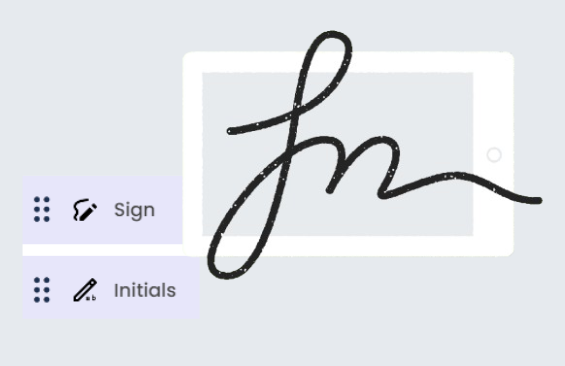In the competitive landscape of modern business, protecting intellectual property (IP) and sensitive information is crucial. A Confidentiality and Invention Assignment Agreement (CIAA) is a key legal document that helps companies safeguard their proprietary information and ensure that inventions created by employees or contractors are owned by the company. This article will guide you through creating a CIAA and explain each clause in detail.
Introduction to Confidentiality and Invention Assignment Agreements
A Confidentiality and Invention Assignment Agreement is a contract between an employer and an employee or contractor that outlines the obligations regarding the confidentiality of company information and the assignment of rights to inventions developed during the term of employment or engagement.
Essential Clauses of a Confidentiality and Invention Assignment Agreement
1. Parties Involved
This clause identifies the parties entering the agreement. It typically includes the full legal names and addresses of the employer (the company) and the employee or contractor.
Example: “This Confidentiality and Invention Assignment Agreement (“Agreement”) is made and entered into as of [Date] by and between [Company Name], a [State] corporation with its principal place of business at [Address] (“Company”), and [Employee/Contractor Name], residing at [Address] (“Employee”).”
2. Purpose of the Agreement
This clause states the purpose of the agreement, which is to protect the company’s confidential information and ensure that any inventions created by the employee or contractor are assigned to the company.
Example: “The purpose of this Agreement is to protect the Company’s confidential information and to ensure that all inventions developed by the Employee during their employment are assigned to the Company.”
Read More: What is a Contract Clause
3. Definition of Confidential Information
This clause defines what constitutes confidential information, including trade secrets, business plans, financial data, customer lists, and any other proprietary information that the company wishes to protect.
Example: “For the purposes of this Agreement, ‘Confidential Information’ means any and all information, whether written, oral, or electronic, that is disclosed to the Employee by the Company, including but not limited to trade secrets, business plans, financial data, customer lists, product designs, marketing strategies, and technical specifications.”
4. Obligations of Confidentiality
This clause outlines the employee’s or contractor’s obligations to maintain the confidentiality of the company’s information. It typically includes provisions on not disclosing confidential information to third parties and using it only for the intended purposes.
Example: “The Employee agrees to maintain the confidentiality of the Company’s Confidential Information and not to disclose it to any third party without the prior written consent of the Company. The Employee further agrees to use the Confidential Information solely for the purpose of performing their duties for the Company.”
5. Exceptions to Confidentiality
This clause specifies any exceptions to the confidentiality obligations, such as information that is publicly available, already known to the employee or contractor before disclosure, or required to be disclosed by law.
Example: “The confidentiality obligations set forth in this Agreement shall not apply to information that (a) is publicly available at the time of disclosure or subsequently becomes publicly available through no fault of the Employee, (b) is known to the Employee prior to disclosure, or (c) is required to be disclosed by law or by a governmental authority.”
Read More: 10 Steps on How to Write a Contract
6. Invention Assignment
This clause requires the employee or contractor to assign to the company any inventions, discoveries, designs, or other works of authorship created during the term of their employment or engagement that relate to the company’s business.
Example: “The Employee hereby assigns to the Company all rights, title, and interest in and to any and all inventions, discoveries, designs, and other works of authorship that the Employee conceives, develops, or reduces to practice, either alone or jointly with others, during the term of their employment and that (a) relate to the Company’s business or actual or demonstrably anticipated research and development, or (b) result from any work performed by the Employee for the Company.”
7. Disclosure of Inventions
This clause requires the employee or contractor to promptly disclose any inventions or discoveries to the company, ensuring that the company is aware of all potentially valuable IP created during the employment or engagement period.
Example: “The Employee agrees to promptly disclose to the Company any and all inventions, discoveries, designs, or other works of authorship that the Employee conceives, develops, or reduces to practice during the term of their employment.”

Instant Confidentiality & Invention Assignment Agreements with Legitt AI
Create tailored agreements effortlessly using Legitt AI’s Contract Generator.
Start Now8. Prior Inventions
This clause allows the employee or contractor to list any inventions or works of authorship that they created before their employment with the company and that should not be subject to the assignment provision of the agreement.
Example: “The Employee represents that there are no inventions, discoveries, designs, or other works of authorship that were conceived, developed, or reduced to practice by the Employee prior to their employment with the Company, except as listed on Exhibit A attached hereto.”
9. Return of Materials
This clause requires the employee or contractor to return all company materials, documents, and property upon termination of their employment or engagement.
Example: “Upon termination of their employment, the Employee agrees to return to the Company all materials, documents, and property, including but not limited to any Confidential Information, in their possession or control.”
10. Non-Compete and Non-Solicitation
This clause may include provisions that restrict the employee or contractor from competing with the company or soliciting the company’s employees or customers for a specified period after the termination of their employment.
Example: “For a period of one year following the termination of their employment, the Employee agrees not to (a) engage in any business that competes with the Company, or (b) solicit any of the Company’s employees or customers to terminate their relationship with the Company.”
11. Governing Law
This clause specifies the jurisdiction and laws that will govern the agreement. It is important to choose a jurisdiction that is relevant to the company’s operations and that has appropriate legal expertise.
Example: “This Agreement shall be governed by and construed in accordance with the laws of the State of [State], without regard to its conflict of laws principles.”

12. Dispute Resolution
This clause outlines the process for resolving any disputes that may arise under the agreement, such as mediation or arbitration.
Example: “In the event of any dispute arising out of or relating to this Agreement, the parties agree to first attempt to resolve the dispute through mediation. If mediation fails, the dispute shall be resolved through binding arbitration in accordance with the rules of the American Arbitration Association.”
13. Severability
This clause ensures that if any provision of the agreement is found to be invalid or unenforceable, the remaining provisions will continue to be in effect.
Example: “If any provision of this Agreement is found to be invalid or unenforceable, the remaining provisions shall continue in full force and effect.”
14. Entire Agreement
This clause states that the CIAA represents the complete and final agreement between the parties and supersedes any prior agreements or understandings.
Example: “This Agreement constitutes the entire agreement between the parties and supersedes all prior negotiations, understandings, and agreements, whether written or oral.”
15. Amendments
This clause outlines the process for making changes to the agreement. Any amendments must be made in writing and signed by both parties.
Example: “Any amendments to this Agreement must be made in writing and signed by both parties to be effective.”
Simplify Confidentiality & Invention Agreements with Legitt AI
Sign invention and confidentiality agreements securely with Legitt AI e-signature.
Sign Agreements Now
16. Signatures
The agreement should conclude with the signatures of both parties, along with the date of signing. This formalizes the contract and indicates that both parties agree to the terms.
Example: “Signed by the duly authorized representatives of the parties as of the date first written above.
Company: _________________________ Date: ____________
Employee/Contractor: _________________________ Date: ____________
Conclusion
Creating a Confidentiality and Invention Assignment Agreement involves careful consideration of various clauses to ensure both parties’ interests are protected. By clearly defining confidential information, outlining the obligations of confidentiality, specifying the assignment of inventions, and including provisions for dispute resolution and governing law, you can create a comprehensive and effective agreement. This not only safeguards the company’s intellectual property but also provides clear guidelines for employees and contractors.
Did you find this article worthwhile? More engaging blogs about smart contracts on the blockchain, contract management software and electronic signatures can be found in the Legitt Blogs section. You may also contact Legitt to hire the best contract lifecycle management services and solutions along with free contract templates.
FAQs on Confidentiality and Invention Assignment Agreement
What is a Confidentiality and Invention Assignment Agreement?
A Confidentiality and Invention Assignment Agreement (CIAA) is a contract between an employer and an employee or contractor that outlines the obligations regarding the confidentiality of company information and the assignment of rights to inventions developed during the term of employment or engagement. It protects the company's proprietary information and ensures ownership of inventions created by employees or contractors.
Why is a CIAA important for companies?
A CIAA is important because it safeguards a company's confidential information and intellectual property. It ensures that any inventions or discoveries made by employees or contractors during their employment are owned by the company, preventing potential disputes and protecting the company's competitive advantage.
Who should sign a CIAA?
Employees, contractors, and any other individuals who have access to a company's confidential information or who may create inventions during their engagement should sign a CIAA. This includes full-time employees, part-time employees, interns, and consultants.
What constitutes confidential information in a CIAA?
Confidential information in a CIAA includes any information that is not publicly available and that the company wishes to keep private. This can include trade secrets, business plans, financial data, customer lists, product designs, marketing strategies, technical specifications, and any other proprietary information.
What are the obligations of confidentiality in a CIAA?
The obligations of confidentiality in a CIAA require the employee or contractor to maintain the confidentiality of the company's information, not to disclose it to third parties without prior written consent, and to use it solely for performing their duties for the company. This helps prevent unauthorized use or disclosure of sensitive information.
Are there any exceptions to the confidentiality obligations?
Yes, exceptions to the confidentiality obligations typically include information that is publicly available at the time of disclosure, already known to the employee or contractor before disclosure, or required to be disclosed by law or by a governmental authority. These exceptions ensure that the confidentiality obligations are reasonable and enforceable.
What is an invention assignment clause?
An invention assignment clause requires the employee or contractor to assign to the company any inventions, discoveries, designs, or other works of authorship created during the term of their employment or engagement that relate to the company's business. This ensures that the company owns the rights to any valuable IP created by its employees or contractors.
How should inventions be disclosed to the company?
Employees or contractors should promptly disclose any inventions or discoveries to the company as specified in the CIAA. This typically involves providing a written description of the invention, including details on its conception and development, to ensure that the company is aware of all potentially valuable IP created during the employment or engagement period.
What are prior inventions, and how are they handled in a CIAA?
Prior inventions are inventions or works of authorship that an employee or contractor created before their employment with the company. The CIAA allows the employee or contractor to list these prior inventions, which are not subject to the assignment provision of the agreement. This protects the employee's or contractor's pre-existing IP.
What happens to company materials upon termination of employment?
Upon termination of employment, the employee or contractor is required to return all company materials, documents, and property, including any confidential information, in their possession or control. This ensures that the company's proprietary information is not retained by the departing employee or contractor.
What is a non-compete clause in a CIAA?
A non-compete clause restricts the employee or contractor from engaging in any business that competes with the company for a specified period after the termination of their employment. This helps protect the company's interests by preventing former employees or contractors from working with competitors.
What is a non-solicitation clause in a CIAA?
A non-solicitation clause restricts the employee or contractor from soliciting the company's employees or customers to terminate their relationship with the company for a specified period after the termination of their employment. This helps protect the company's workforce and client base from being poached by former employees or contractors.
How are disputes resolved under a CIAA?
Disputes under a CIAA are typically resolved through mediation or arbitration, as specified in the dispute resolution clause. This provides a structured process for resolving disagreements and helps avoid costly and time-consuming litigation.
What does the governing law clause specify?
The governing law clause specifies the jurisdiction and laws that will govern the agreement. It is important to choose a jurisdiction that is relevant to the company's operations and that has appropriate legal expertise, ensuring that the agreement is enforceable.
Can a CIAA be amended?
Yes, a CIAA can be amended, but any changes must be made in writing and signed by both parties to be effective. This ensures that both parties agree to the modifications and that the changes are properly documented.
